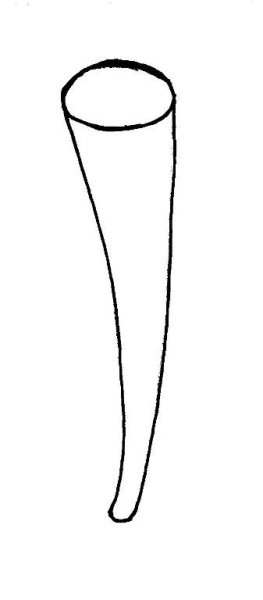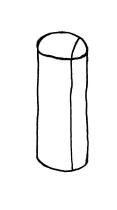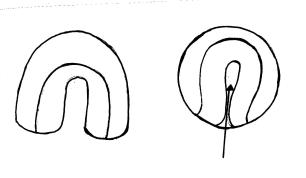

Hey, JABO, Your Butt Crack is Showing!
By Steve Sturtz
A huge thank you goes out to David McCullough who has granted permission, for
the first time, for the following secrets to be revealed. This article is a
present from David and me as a tribute to our friendship with Edna “Spikey”
Eaton, president of the Texas Marble Club.
We wish you, the management team of the Texas Marble Club, great success and a
long and prosperous future. We know Edna will provide great leadership.
The JABO factory is a
In my third book, “2008 JABO Classics: The Experimentals”, I talked about the
standards of excellence David set last year in marble-making in terms of
oxblood, aventurine, mica, number of colors per marble and complexity of
pattern. I go on to tell this story:
“‘Right now, these patterns I have seen, I think I’ve figured out what it is all
about. I think a few more runs will tell me more,’ David mused. ‘I do believe
that we can get that complete pattern all the way around the marble.’
The standards of the intricacy, action, and patterns of marbles have been
changed forever. Many of us can think of lots of very active swirl marbles from
other makers such as the Peltier Miller Swirls. But as the year 2008 went on,
the patterns of the Experimental marbles became more intricate.
When I arrived in
When the Tribute to Friendship Run (March 5th, 2009) came around, I made a bee
line to the machine which was not under the tank yet. I looked and looked –
nothing. Dejected, I went into the trailer, planning on using my best, creative,
begging skills. I asked, I begged. Then David smiled and, with a laugh, said,
‘Go on out. I told Richard to show you.’
Richard and Ronnie stood and chuckled as I looked – nothing again. Then they
gave me a small hint – nothing. Then they told and showed me with great pride. I
started to laugh and the harder I laughed, the harder they laughed.
He had adjusted those machines yet again to strive for another first. He is now
able to create an intricate pattern where not only do the stripes get thinner
but they go all over the marble. They go all the way around the marble to all
four points of the compass. Once he explained the adjustment to me, it was so
simple. Here is a master glass maker, who, although he knows his machines and
craft so well, had taken a long journey to discover this technique. When he
figured it out, complexity became simplicity.”
(excerpt from 2008 JABO Classics: The Experimentals. Sturtz, Steve.
As with most great inventions or ideas, they have their beginnings in a
happenstance. A few years ago, the floor at JABO needed repairs. The feet of the
marble machine were in two holes and hence the hot stream of glass had further
to drop before being sheared off. The ensuing marbles contained a more intricate
pattern.
When the floor was repaired, the marbles returned to the typical JABO pattern
and David continued to make marbles. As mentioned in my second book, “David’s
JABO Renaissance”, it wasn’t until the fall of 2007 that David began to expand
his experimentation with marbles in preparation for the Experimental runs of
2008. He thought about changing the pattern of his marbles as well as adding
aventurine, more colors, oxblood and mica. Every experiment in the last eighteen
months has a precedent in the past that McCullough has already tried.
There are those who would tell you that making marbles with a machine is very
easy and that what you throw in the back comes out the front. The real
marble-making doesn’t happen in the tank when the glass is molten and red hot
and it certainly doesn’t happen when it comes down the rollers. By then, it’s
long over. The real secret to marble-making (and it takes hours and hours and
hours) is the planning that goes on for weeks before the run. David McCullough
spends an awful lot of time talking to the investors about where they could go
and how they could get there. We have already been working on the 2009 Fall Runs
for two months and will spend another two months phoning, talking and
questioning before they occur.
Let’s start by telling you that the very complex patterns are caused by having
as long a
length as possible from the bottom of the tank where the glass comes out red hot
to the little cup where the glass builds up in cow patty-like shapes. Here, the
shears cut it off and it becomes a cylinder as it rushes for the rollers. The
longer the distance from the bottom of the tank to the shears, the more the
glass stream gets thinner because it goes farther. It is akin to pulling taffy
or soft-serve ice cream coming down from the nozzle. Because it’s thinner, it
piles up on itself and the colors are then distributed in a more complex fashion
all the way around and through the marble. Therefore by elongating the distance
from the bottom of the tank to the cutter, more complex patterns are created.
For the first time, there are patterns that really go all the way around the
marble. This discovery was revolutionary.
David began experimenting with complex patterns on the first Tribute Run in
September and continued to experiment with each consecutive run. By the time we
got to the Tributes’ Last Dance Run in December of 2008, he had achieved the
complexity of pattern by lowering the machine so the distance from the tank to
the cutters was longer at the rear of the machine. However, he hadn’t lowered
the front end of the rollers, where the marbles roll off. This resulted in many
marbles with cold roll marks. So when we got to the next run which was in 2009,
the JABO Tribute to Friendship, David had figured out that the secret was to
also lower the front so that the front and back were at the same height. When he
did that, it cured the roll marks. So, the run where he was most completely
successful for the first time was the JABO Tribute to Friendship Run and he, as
well as the Tributes, were very pleased.

Figure 1 – elongated tube that will form a complex pattern on a marble
Many runs since then have had the benefit of this experience. It tickles me to
no end how many people think how easy it is to make marbles and yet David’s
search for this complete pattern has taken him thirty years. I have teased David
many times about the fact that it has taken him such a modest length of time to
become an instant overnight success. Here is a master glass maker, who although
he knows his machines and craft so well, had been on a long journey of discovery
before he was able to work it out. When he was successful, complexity became
simplicity. When you have found simplicity, you have found your best work. David
has certainly done that with all of the Experimentals of 2008 and then, with the
Classics he has made in 2009, using all of the things he had learned.
The other side of that coin - the perfect negative correlation are the butt
cracks. The butt crack is created using the exact opposite of the very complex
patterns.
Butt cracks are formed when the machine is much higher and the distance from the
tank to the cutter is much shorter. The flow of glass, therefore, is very thick
and so it fills up the little cup quickly before the cutters come along. As a
result, it is thick enough so that on many marbles, it only folds over on itself
once forming the butt crack. Then when it is cut and it goes down the shoot, it
hits the rollers, jiggles a little and it gives it that final little twist at
the end of the butt crack. Often I look at these marbles and I think of the
yellow ribbons or the pink ribbons people wear on their lapels as tributes to
cancer victims or to the military.

Figure 2 – tube formed from the shortest distance from the tank to the cutter.
It is fascinating that David didn’t understand or didn’t figure out the butt
crack until after he figured out the complex pattern. It is amazing that as hard
he has

Figure 3 – tube of hot glass folded over to create a butt crack
searched; as often he has looked;
and as often as he thought daily for thirty years, it was elusive! But,
suddenly, bang, there it was. After the complex pattern was figured out and
tried on a few more runs, eureka. David realized that he knew the answer to the
question of the butt crack.
What you learn by standing at the hot end of the machines and talking for hours
to the guys who have worked there for ten to twenty years and David for thirty,
is that the minute adjustments on these machines can make any sort of change in
the architecture of the marble. The number of combinations of adjustments is
pretty well broader than most folks realize. When people see the V’s or a
particular patch or a particular pattern on a particular machine, they say, “Oh
that is made by (fill in name of a company yourself) on the thus and so machine
(fill in the name of a machine yourself) and they just assume it was made by
that machine. Those people are collectors not marble makers. You can do a lot
with any particular machine by making an adjustment.
Another example of this is the marble from the Tribute to Friendship Run called
Griff. It is a double seam that almost looks like a patch and ribbon from Marble
King and it isn’t. It is singularly the result of machine adjustment. It takes a
lot of years of experience to know how to make these very small adjustments.
Often we have seen those adjustments while standing in the factory and many
times they were made for the first time while we stood there. We didn’t
understand what we had seen. Often, even while we were standing right there, we
didn’t see it done. We think now that anytime we choose, we can either have a
complex pattern; we can have double seams or we can have a butt crack. Would you
like David to make a Vitro “V”? Or, should he make a more complex Champion
Old-Fashioned? Maybe some wire pulls are in the future?
I am very pleased and complimented and I hope the members of the
© Steve Sturtz July 2009
JABO: A Classic. Sturtz, Steve; Johnson, Michael.
David’s JABO Renaissance. Sturtz, Steve; Johnson, Michael.
2008 JABO Classics: The Experimentals. Sturtz, Steve.